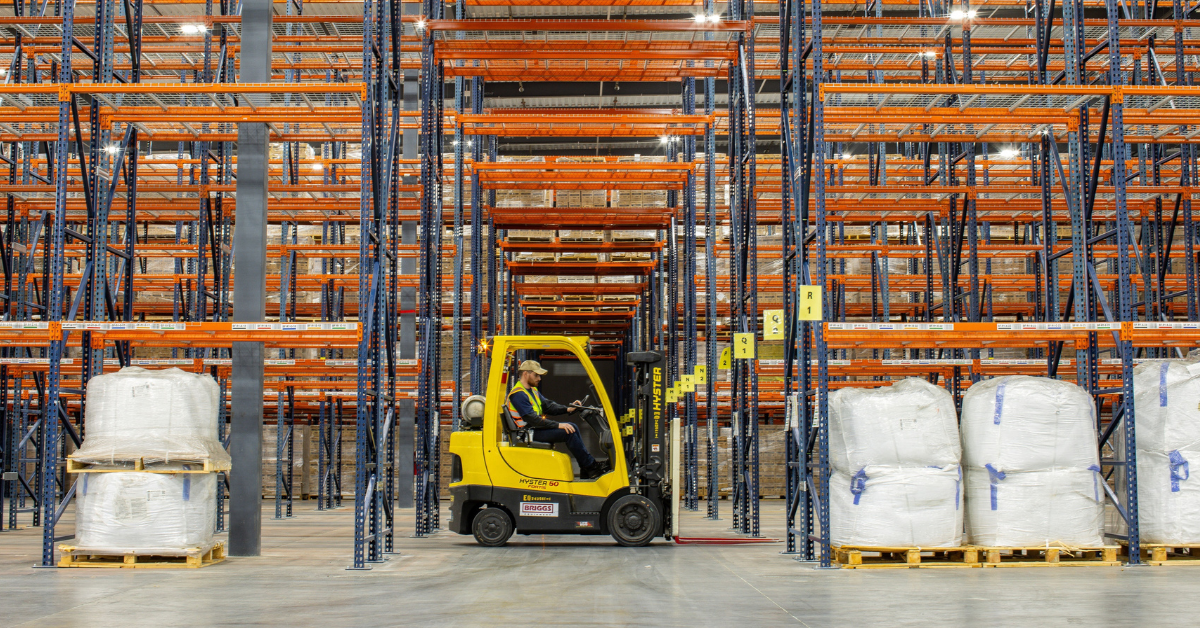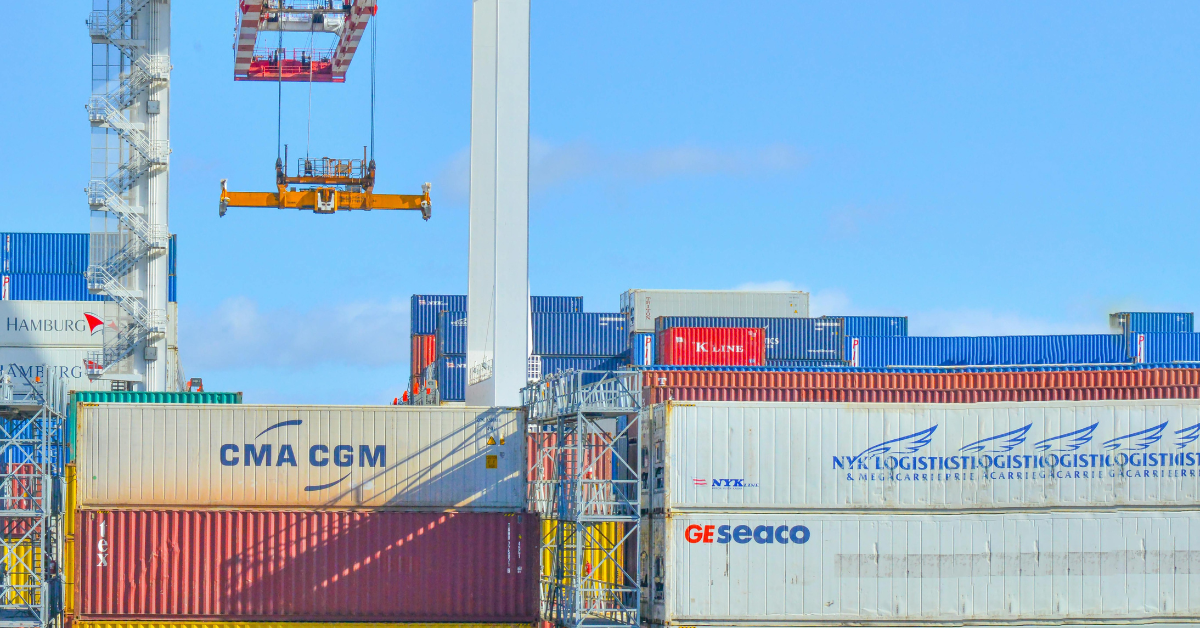Understanding How New Tariffs Could Impact Your Supply Chain Operations

Countless industries rely on the dynamic flow of goods across borders, making global trade and its intricate supply chains essential. Currently, a major shift is underway: the United States has implemented new tariff increases, a decision that is already beginning to send ripples throughout these established networks.
This blog aims to cut through the complexity and provide supply chain professionals with a clear understanding of these potential impacts, offering valuable insights to navigate this evolving landscape and understand how supply chains need to adapt to such changes.
Understanding the New Tariff Regulations
It is important to note that tariff policies are subject to frequent and rapid change. The information provided below reflects the situation as of April 9th, 2025.
Recent developments have significantly altered the tariff landscape. As of today, President Trump has authorized a 90-day pause on tariffs for most countries, effective immediately. During this 90-day pause, a reciprocal tariff rate of 10% will be in effect.
However, tariffs on goods imported from China have been raised to 125%, also effective immediately. This increase is cited as a response to China’s implementation of an 84% tariff on U.S. goods, which was, in turn, a response to earlier U.S. tariff increases.
Reasons for the Tariff Changes
The stated goal behind these tariff changes is to reshape global trade, address trade imbalances and protect American jobs and manufacturing. The administration argues that these measures will:
- Incentivize manufacturers to relocate production back to the U.S.
- Encourage American consumers to purchase more U.S.-made goods.
- Stimulate domestic investment.
- Reduce the trade deficit.
Implementing the Tariff Changes
The implementation of these tariffs represents a significant shift from the decades-long pursuit of free trade agreements. These changes represent some of the largest import tax increases in recent U.S. history.
These tariffs are poised to have a substantial impact on the supply chain industry. The adjustments businesses will be forced to make in sourcing, logistics and distribution are likely to create disruptions and uncertainty within established supply chains, particularly concerning trade with major resource economies.
Direct Impacts on Supply Chain Operations
The newly implemented tariffs are already creating tangible shifts and challenges within supply chain operations. Here’s a closer look at some of the most immediate impacts:
Increased Supply Chain Costs and Reduced Profitability
At their core, tariffs function as a direct tax on imported goods. This immediately raises the acquisition cost for businesses that rely on raw materials, components or finished products sourced from the affected countries. These initial cost increases don’t remain isolated; they inevitably ripple through the entire supply chain. Manufacturers face higher input costs, which can then translate to increased prices for distributors. This increase in cost can also put pressure on business profit margins.
Sourcing and Labor Disruptions
Relying heavily on suppliers from countries facing high tariffs may become economically unsustainable, often leading companies to explore diversifying supplier networks. However, this diversification isn’t a simple switch. Identifying, vetting and onboarding alternative suppliers can be time-consuming and costly, involving significant due diligence and the complexity of establishing new logistical pathways.
In addition to these sourcing challenges, tariffs can cause labor disruptions. Industries heavily reliant on imports may face pressure to lower costs to remain competitive, potentially leading to reduced hiring, layoffs or other workforce adjustments that impact workers and local economies.
Inventory Management Challenges
The uncertainty surrounding tariffs can introduce significant volatility into demand forecasting and inventory management. The fear of further tariff increases might incentivize some businesses to overstock goods before potential price hikes, leading to increased warehousing costs and the risk of holding obsolete inventory. Conversely, the disruption of traditional supply lines due to tariffs could lead to understocking and potential shortages, impacting production schedules and customer fulfillment. Striking the right balance becomes a delicate and challenging act in this fluctuating environment.
Logistics and Transportation Disruptions
As businesses adapt their sourcing strategies and potentially shift trade routes to avoid or minimize the impact of tariffs, the existing logistics and transportation infrastructure could face new pressures. Ports handling increased volumes from new regions might experience congestion. Changes in the origin and destination of goods can also lead to adjustments in transportation modes and potentially increase shipping costs. Businesses need to be prepared for potential delays and modifications in their established logistical networks.
Increased Risks of Non-Compliance
The pressure to mitigate the impact of tariffs can also increase the risk of non-compliance. Businesses may be tempted to engage in practices such as mislabeling or underreporting the value of imported goods in an attempt to avoid or reduce tariff payments. This can lead to legal complications and damage a business’s reputation.
Broader Economic Implications
Beyond the immediate impacts on supply chain operations, the new tariff regulations have broader economic implications:
- Increased Consumer Prices: Increased costs throughout the supply chain often lead to higher consumer prices, potentially reducing purchasing power.
- Trade Relationships: The tariffs can trigger retaliatory measures from trading partners, leading to trade disputes and negatively impacting international trade relations and stability in global markets.
- Economic Uncertainty: These tariff changes inject uncertainty into the economic outlook, making business forecasting more challenging and potentially affecting investment decisions and economic growth.
Implications for Moving Logistics
While this blog primarily addresses supply chain impacts, it’s crucial to recognize that tariffs can have far-reaching effects, even influencing decisions and costs related to moving logistics. This can affect many industries, including ours, as well as people personally.
For businesses thinking about relocating due to tariff pressures, moving logistics become a major cost consideration. Tariffs can increase the price of construction materials and machinery/equipment needed to set up new facilities, impacting the financial feasibility of relocation.
Similarly, individuals and families relocating may also encounter increased moving expenses. Higher fuel prices and increased housing demand in relocation areas, potentially driven by tariff-related economic shifts, can drive up moving costs.
In essence, tariffs have a wider reach than just the cost of goods; they can also influence relocation decisions and moving logistics expenses for both businesses and individuals.
Strategies for Mitigating the Impact
While the new tariff regulations present significant challenges, businesses can proactively adopt several strategies to mitigate their impact on supply chain operations and overall profitability.
1. Supply Chain Re-evaluation and Optimization
In the face of new tariff regulations, it’s critical to conduct a thorough review of your existing supply chain network with a focus on identifying cost-saving opportunities. This involves identifying areas of inefficiency, redundancy or potential bottlenecks that can be addressed to streamline processes, optimize logistics and improve overall efficiency. The goal is to find ways to reduce operational costs, which can help absorb the increased expenses associated with tariffs. For example, businesses might re-negotiate existing contracts, consolidate shipments or implement more efficient warehousing practices to achieve these cost reductions.
2. Supplier Negotiation and Relationship Management
Maintaining open and transparent communication with your existing suppliers is essential. Engage in proactive negotiations to explore potential cost-sharing arrangements or alternative pricing agreements that could help alleviate the burden of tariffs. Strong supplier relationships, built on mutual understanding, can be invaluable in navigating these challenging times. Explore if there are any opportunities for value engineering or process improvements at the supplier level that could lead to cost reductions.
3. Legal and Regulatory Strategies
In addition to supplier negotiations, businesses can leverage various legal and regulatory strategies to mitigate the impact of tariffs. These include:
- Utilizing Free Trade Agreements (FTAs): Explore opportunities to utilize Free Trade Agreements that may offer reduced or eliminated tariffs for goods traded between member countries. Carefully review the specific provisions of relevant FTAs to determine if your business can benefit.
- Foreign Trade Zones (FTZs): Investigate the use of Foreign Trade Zones, which are designated areas within the United States where goods can be stored, manipulated or manufactured without being subject to tariffs until they enter the U.S. customs territory. Foreign Trade Zones (FTZs) offer businesses the ability to delay tariff payments, providing greater control over cash flow.
- Duty Drawback Programs: Research duty drawback programs, which allow businesses to obtain refunds on duties paid on imported goods that are later exported. This can be particularly beneficial for manufacturers who import materials for use in products that are ultimately exported.
4. Exploring Domestic Sourcing and Nearshoring
Many manufacturers are hesitant to relocate operations to the U.S. because of higher labor costs. However, the changing tariff landscape might prompt businesses to explore domestic sourcing or nearshoring, which involves bringing production or sourcing closer to home.
While this shift may reduce tariff exposure and potentially offer advantages like faster lead times and better quality control, it’s essential to carefully weigh factors such as domestic production capacity, cost competitiveness, quality standards and conduct a thorough cost-benefit analysis. For some industries or in specific situations, domestic sourcing or nearshoring may still be a strategic option, though not without its own set of challenges.
5. Leveraging Technology and Data Analytics
Supply chain innovations, particularly in the realm of software and data analysis, are essential tools for navigating the challenges posed by tariffs. Leverage advanced planning software to model different tariff scenarios and their potential impact. Utilize real-time tracking systems to gain better visibility into your supply chain and identify potential disruptions early. Data analytics can provide valuable insights into cost trends, supplier performance and potential risks, enabling more informed decision-making in response to tariff changes.
6. Seeking Expert Guidance
Navigating the complexities of new tariff regulations, customs procedures and international trade law can be daunting. Consider consulting with trade experts, customs brokers and experienced logistics providers. These professionals possess the specialized knowledge and expertise to help you understand the specific implications for your business, optimize your import/export strategies and ensure compliance with all relevant regulations. Their guidance can be invaluable in minimizing supply chain disruptions and identifying potential cost-saving opportunities.
Navigating the New Tariff Landscape
The new tariff regulations are undeniably reshaping the landscape of global supply chains and presenting new hurdles. From sourcing complexities to potential logistics disruptions, businesses face a challenging environment. However, by proactively adopting strategic mitigation strategies, businesses can overcome these tariff related disruptions.
If you’re looking for expert support in navigating these complex supply chain challenges, The Armstrong Company is here to help. We provide comprehensive supply chain analysis and project support, along with network optimization and cost-reduction alternatives.
Minimize the impact of tariff changes on your operations. Contact Armstrong today to explore how we can help you optimize your supply chain for efficiency, resilience and success in this evolving global trade environment.


